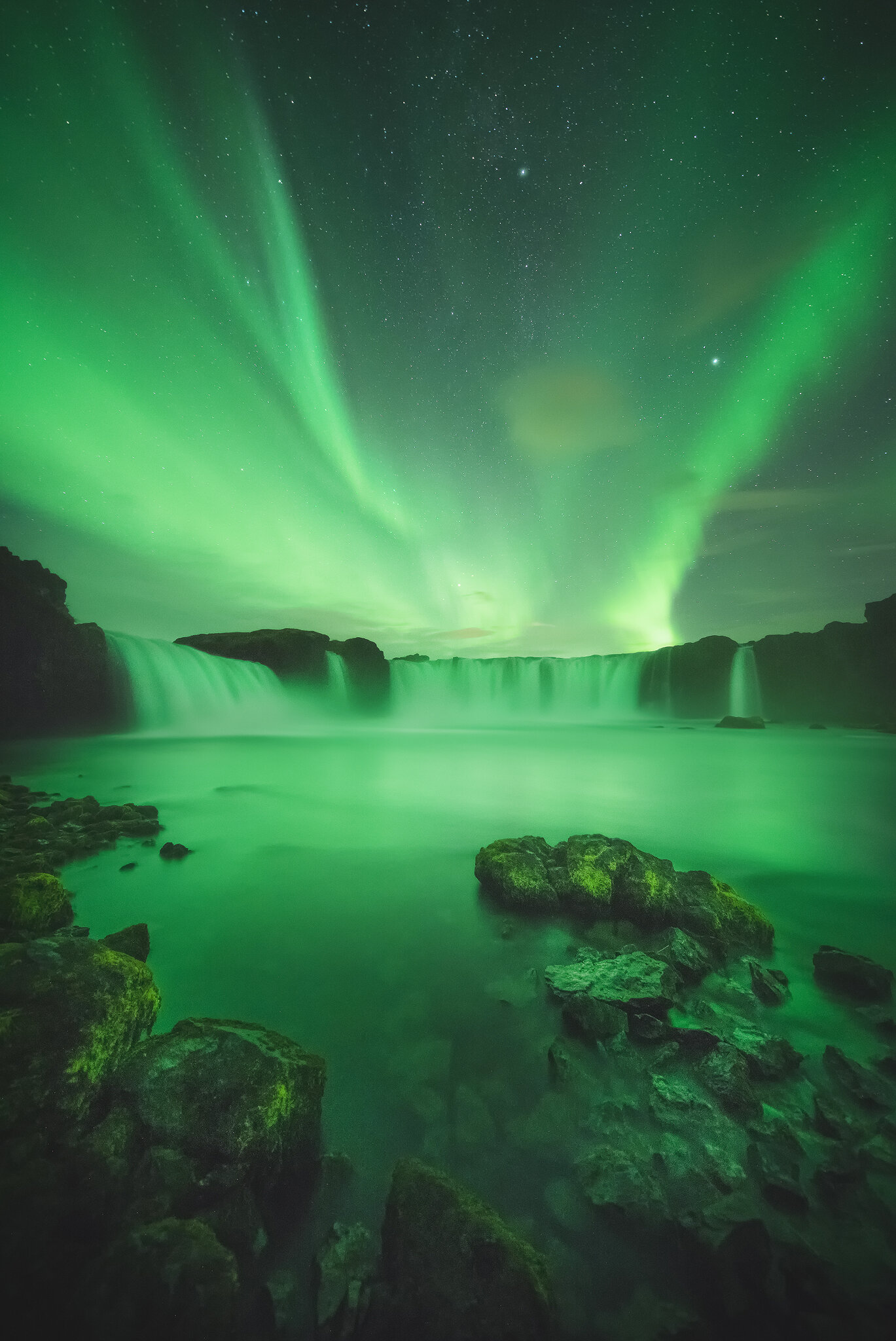Goðafoss (waterfall of the Gods or waterfall of the Goði) is one of the most iconic landmarks in Iceland. Couple it with one of the most spectacular natural phenomena - northern lights and you get a magical moment. Overall green tones of the image is caused by a moonless night as the only source of color the camera was able to pick up was these green overtones of the northern lights.
Waterfall sits on the river Skjálfandafljót which has its source at the northwestern border of Vatnajökull glacier. From there it streams through Icelandic highlands and finally flows into Skjálfandi bay north of the country. Waterfall itself is about 30 meters wide and drops down from the height of 12 meters.
There is also an interesting backstory to this waterfall. Goðafoss is connected to Icelands conversion from Norse paganism to Christianity. In the year 1000 AD, þorgeir Ljósvetningagoði þorkelsson, chieftain from nearby Ljósavatn, was at that time a lawspeaker in Icelanding Alþingi (Parliament). He was faced with the task to settle growing disputes between those who practiced old customs and Christian followers. Despite being a pagan himself, he decided that all of Iceland should be Christian. Legend says that, once he returned back to Ljósavatn, as a symbolic act, he took relics of the Norse gods and threw them into the waterfall. This is how the waterfall got its name.
Surprisingly only last year, 2020, authorities of Iceland finally declared that Goðafoss is a protected site. The protection means that the natural flow of the water into the waterfall will be maintained and preserved, limiting commercial activity along the river.
Camera used: Nikon D810, Irix 11mm


